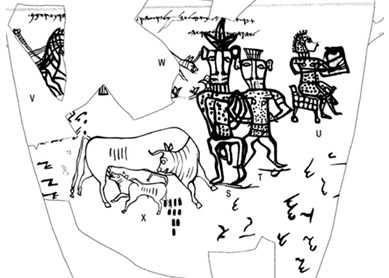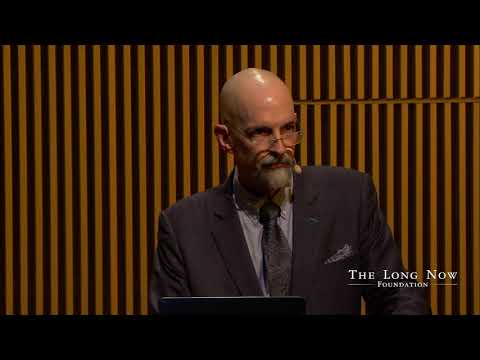Code of Hammurabi used in Snow Crash
5 uses
The black stele or obelisk is the Code of Hammurabi, which dates from about 1750 B.C. The treelike structure is a Yahwistjc cult totem from Palestine. 27-28 — Chapters 27-28 (70% in)
The asherah and the Code of Hammurabi are in museums. 27-28 — Chapters 27-28 (71% in)
There is a representation of Marduk here on this stele-the Code of Hammurabi. 33-34 — Chapters 33-34 (37% in)
Hiro wanders over to the Code of Hammurabi and has a gander. 33-34 — Chapters 33-34 (38% in)
Enki, or his son Marduk, tried to reimpose order on society by supplanting the old system of me with a code of laws-The Code of Hammurabi. 55-56 — Chapters 55-56 (64% in)

What Is an Asherah? by Ellen White
Asherah is an ancient Near Eastern mother goddess. In Ugaritic, Akkadian, and similar texts, she is a powerful, important goddess, the mother of the seventy great gods and the consort of El, the chief god. Asherah’s name also appears in the Hebrew Bible. Yet, it is not always clear that the biblical authors are referring to the goddess when they use the word “asherah.”
Who (or what) is Asherah in the Hebrew Bible?
The term asherah appears forty times in the Hebrew Bible, but only eight of these instances occur in the singular form. Most occurrences appear with the definite article (“the” asherah) or a possessive suffix (“his” or “their” asherah). Since Hebrew does not capitalize proper names the way English does, it can be difficult to know when a proper name is being used. Yet, in Hebrew, it is unusual for a proper name to be accompanied with “the” or a possessive pronoun (for example, I am not “the Ellen” nor would my husband call me “his Ellen”). This suggests that the majority of the references to the term asherah in the Hebrew Bible are related to the goddess but may not address her directly. One might infer that the reference is to an object when a definite article or possessive suffix is used, but without either, it is ambiguous. The term could refer to an indefinite object (one asherah among many) or be the proper name of the ancient Near Eastern goddess.
Why do most passages in the Hebrew Bible seem to refer to an object rather than a deity?
In the ancient Near East it was common for deities to be represented by objects (i.e., a cult symbol). These objects were a physical manifestation of the deity and enabled the people to worship the deity in effigy. Asherah’s cult symbol was a living tree or a consecrated wooden pole.
The vast majority of references to Asherah in the Hebrew Bible are found in the Deuteronomistic History (Joshua, Judges, Samuel, and Kings), and one of the most important themes in these books is the rejection of other gods. One way the author(s) of the Deuteronomistic History could demean Asherah is by referring to her cult symbol rather than her name, thereby transforming her from a goddess to an object that could be discarded.
In the Deuteronomistic History, kings were often evaluated by how they responded to Asherah worship, which was apparently widespread among the Israelites. Evil kings, such as Jeroboam and Rehoboam, fostered Asherah worship (1Kgs 14:15, 1Kgs 14:23), and Ahab and Jezebel officially endorsed and promoted her cult (1Kgs 18:19). Yet, good kings, such as Asa, Josiah, Jehoshaphat, and Hezekiah (also Gideon the judge) attempted to eradicate Asherah worship (e.g., Judg 6:25-30, 1Kgs 15:13, 2Kgs 21:7). Despite these efforts, Israelites remained devoted to Asherah (Isa 27:9, Jer 17:1, Mic 5:14), which indicates that the beliefs expressed in the Deuteronomistic History are not the ones that governed popular practice.
Why was Asherah worship so ingrained in Israelite religion?
The answer is not simple or clear but is likely twofold. First, Asherah was connected with fertility, childbirth, and motherhood. These states were highly valued but dangerous and often elusive in ancient Israel. Therefore, people may have been scared not to worship her (basically seeing her cult as a form of insurance). Second, there is some evidence from Kuntillet ‘Ajrud and Khirbet el-Qom (archaeological sites) that suggest Asherah was the wife of Yahweh, who may have assimilated the persona of El. Since Asherah was associated with El, she became associated with Yahweh. Yet, these inscriptions refer to “Yahweh and his Asherah.” The possessive suffix again causes an interpretive problem: is this Yahweh and his goddess wife or Yahweh and his cult object? The idea that Asherah was Yahweh’s wife is tenuous, but it is the best explanation of the evidence so far. Therefore, if Asherah was indeed considered to be Yahweh’s wife, then she would have occupied an important place in the Israelite cult.
Ellen White, “What Is an Asherah?”, n.p. [cited 2 Oct 2022]. Online: https://www.bibleodyssey.org:443/en/passages/related-articles/what-is-an-asherah






